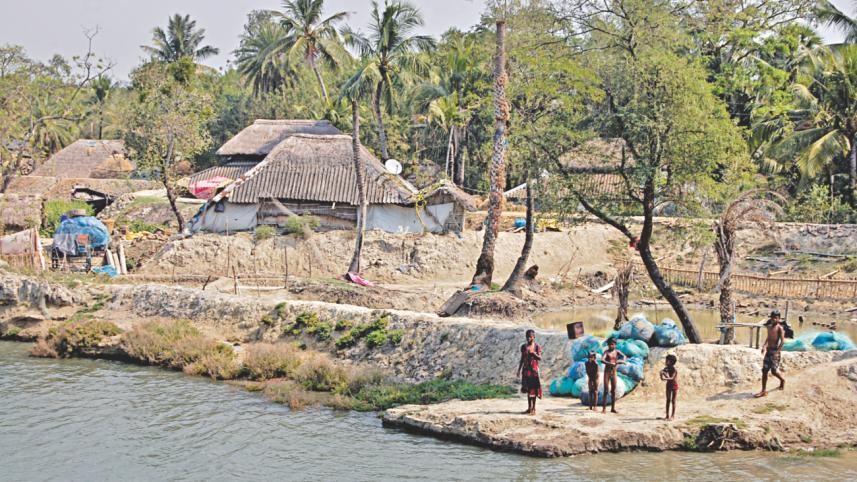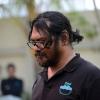A trip through Indian part of Sundarbans

Things did not work as per the plan from the very beginning. The bad news came even before we flew to Kolkata.
The organisers said they had to change the plan as their luxury boat MV Paramhangsa had not got permission to cross the India-Bangladesh border.
Initially it was planned that a group of Bangladeshi journalists would fly to Kolkata, get on board the Paramhangsa along with a group of Indian journalists and return to Khulna through the trans-border waterways flowing through the Sundarbans.
The aim was to give the journalists from both countries an opportunity to observe the vulnerability, threats and the current situation of the world's largest mangrove forest, the home of Bengal tigers.
It was also expected that the journalists would get a chance to discuss what role they might play to save the ailing Sundarbans.
But the journey was cut short and limited within the rivers of the Indian part of 'bushy Sundarbans'.
The Bangladesh delegation included a group of 11 journalists, conservationists, water experts and communications specialists. They were directly taken to a boat at the Millennium Park Jetty, Kolkata from Netaji Subhas Chandra airport to join the Indian team.
In total, it was a group of around 30 journalists, conservationists and river experts from Bangladesh and India on board.
The Paramhangsa set sail towards the Sundarbans through the Ganges, which takes the name Padma upon entering Bangladesh.
The vessel anchored in the Hakania-Doania river near the Namkhana jetty. A group of fishermen from the Kakdwip Island boarded the boat to meet with us.
Their annual catch had shrunk significantly over the last 10 to 12 years with an increase in salinity in the river water, said Bijan Maiti, leader of the group.
The fishermen said the government should have banned trawling net as it caught all kinds of fish, even the small fry, from the bottom of the sea in the trawling areas.
Asked why they often crossed the border to fish in Bangladesh territory, one of them said fishermen from the other side also did the same. Around 100 Bangladeshi boats were sieged near the Kakdwip, they added.
Like the Bangladesh part, the Sundarbans in the West Bengal also is crisscrossed by many rivers.
As we discussed issues related to the Sundarbans on the first day [March 18], MV Paramhangsa was plying through the Muriganga, Hakania-Doania, Saptamukhi, Rakkhoskhali rivers.
The journalists from Bangladesh were pushing for increasing water flow in the rivers of the Gangetic system and stopping operation of commercial vessels through the Sundarbans under the Indo-Bangla protocol and unplanned development.
Cricket also dominated the discussion at times as it was the day before the Bangladesh-India quarterfinal match in the World Cup 2015.
India put fences all along the bank of the river on the forest part in the Sundarbans so that Tigers could not cross the river to enter locality, said Ratul Saha, coordinator, Sundarbans Landscape, World Wildlife Fund (WWF) India.
Ratul, who worked in a tiger census conducting camera-trapping method, said there were 111 tigers in the Indian part of the Sundarbans.
On the second day, the journalists were discussing conservation of the mangrove forests while our boat was moving through the Thakuron, Ajmolbari, Sundarikati, Matla and Vidya rivers.
A visit to a village on the bank of the Durgaduani river was scheduled for the second day of the journey.
As the journalists met the villagers, Panchu Roy, an elderly fisherman, described how their village was flooded during the cyclone Aila and how crocodiles took away three women when they had gone to catch shrimp fry in the river.
By that afternoon, the result of the cricket match and blatant mistakes of the match officials were known to all. Unsurprisingly, the Indian journalists were not talking much about it.
In two days, a number of barges were seen on the river carrying fly ash for the cement factories in Bangladesh. But not a single species of wildlife except a great egret was spotted by this correspondent all through the journey.
It was time to come back. In the two days, media personnel, conservationists and water experts discussed how to extend cooperation to save the Sundarbans.
It was now time for MV Paramhangsa to start its next journey from the Jharkhali jetty towards Kolkata with a group of politicians from Bangladesh and West Bengal who would also discuss how to save the forest.
“Now we will convey the outcomes of our trip to the politicians of Bangladesh and Paschimbanga. We hope the politicians will transform our recommendations into actions and share the efforts to save the Sundarbans,” said Jayanta Basu, an environmentalist and also a journalist from the Telegraph.
The Bangladeshi politicians were led by Dr Hasan Mahmud, chairman of the parliamentary standing committee on environment and forest, while Biman Banerjee, speaker of Paschimbanga legislative assembly, led the Indian politicians.
Biman Banerjee said the Sundarbans was vulnerable due to climate change and pressure of increasing number of population.
“The water of the Ganges is flowing through two countries. We are also sharing the same ecosystem, the Sundarbans. So, we need to jointly figure out how to save the Sundarbans as the forest is vulnerable due to climate change,” Biman observed.
Dr Hasan Mahmud said Bangladesh and India needed to seek global attention towards the Sundarbans and the upcoming Paris summit could be an excellent opportunity to that end.
“Bangladesh and India are sharing the same ecosystem. We need to exchange our experience and work together to save the forest. Today we are sitting under a single umbrella to save the Sundarbans,” he said.
Before the politicians came into the scene, the journalists, experts and conservationists had agreed to form a common journalists' group comprising those working on the Sundarbans. They also discussed launching two community radios and initiating exchange programmes so that the community from one country could learn about conservation measures of another.
The discussion was over. Now it is time for the politicians to translate its outcomes to save the Sundarbans.

 For all latest news, follow The Daily Star's Google News channel.
For all latest news, follow The Daily Star's Google News channel.